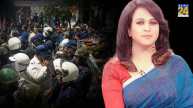NASA launched Viking 1 spacecraft on 1975. It was launched to explore the possibility of existence of life on Mars. According to reports, scientist believes that it might have damaged that possibility, in its way of exploration.
According to an astrobiologist at the Technishe University, Dirk Shulze-Makuch said that, NASA might have unintentionally destroyed protentional life on mars. This might have happened during Viking mission in 1970’s by NASA.
In the year 1976, Viking 1 mission of NASA have deployed two spacecraft to the Martian surface just to investigate the sign of life and the Red Planet. According to reports, these experiments have process of mixing water and nutrients with soil samples. They mixed it with the soil samples collected from Mars.
Viking had various objectives when it got landed on Mars in the year 1976. One of the objective was to have a set of experiment to test the Martian dirt for biosignatures. Biosignatures are the traces of molecules which indicate the presence of life.
The lander conducted the series of experiments to detect respiration and metabolic process.
Schulze-Makuch’s Approach
According to radical theory by Schulze-Makuch, the Viking might have encountered with Martian life, but unintentionally destroyed it. This might have happened due to water based experiment used by them.
According to Schulze-Makuch, NASA must use a different approach for proving the existence of life on Mars. He came to this point as he worked in Atacama Desert, where the environment is similar to that of red planet.
The scientific reason behind the ‘salt’ approach is that, by the help of salt, it can directly pull water from atmosphere.
He also mentioned a term called ‘Hysteresis’. Under this the system resists crystallization and water is drawn out. The delay in the process allows water to remain in salt for a longer period of time than expected.
Schulze Makuch said that, “There was one study done in the Atacama Desert where there was torrential rain and it flooded a huge area. Afterwards, the scientists found that 70-80% of the indigenous bacteria died because they couldn’t handle that much water so suddenly. This really fits into the same picture.”
The process challenges the strategy used by NASA for Searching life by ‘following the water’.
Also Read: Who Was Mohammed Afif? Hezbollah Spokesperson Killed In Israeli Airstrike In Beirut













